SARJANA KEJURUTERAAN AWAM AIR MATA DALAM DEWAN KONVOKESYEN
Oleh:Mokhtar Petah
Parit Raja, Johor, Isnin – Universiti tun Hussein Onn – UTHM, telah menganugerahkan Ijazah Kehormat Sajana Kejuteraan Awam kepada bekas asli Parlimen, kawasan Batang Sadong, Sarawak dan ahli perusahaan dan perniagaan Melayu terbilang, Dato' Ir. Wahab bin Suhaili, 59 tahun, dalam majlis konvokesyen ke - 8 universiti tersebut, semalam (Ahad).
Ir. Wahab dari kelurga misikin – tinggal dalam rumah kecil empat batang tiang bersama tujuk orang anak dan hidup dalkam keadanan kais pagi makan pagi dan kais petang makan petang, di kampung Iboi, Samarahan Sarawak.
Beliau adalah seorang jurutera profesional dan seorang ahli koporat Melayu yang terbilang di negara ini.
Sepanjang menuntut disekolah rendah, kata Ir. Wahab, “ saya ada hanya sepasang pakaian seragam, jika basah kena hujan pada petang, malamnya ibu saya mengeringkannya ..., kerana akan pakai esok pagi.”
“Pada zaman itu tak ada mesin pengering ..., jadi ibu saya yang mengeri dengan
api ...,”katanya.
Beliau telah berjaya melanjutkan pelajaran ke Sekolah Menengah Tun Razak di Kucing dan kemnudiuan berrjahya mekanjutkan pelajaranya di Universiti Teknologi Malaysia pada 1974 – 77 dan berjaya memperolehi diploma kejuruteraan awam.
Beliau telah melanjutkan oelajarannya ke University of Glosgow,Scotland pada 1978 -81.
Sekembali ke tanah air, Ir. Wahab telah berkhdimat dalam Jabatan Kerjaraya Sarawak. Kemudian beliau melanjutkan pelajaran peringkat ijazah dalam bidang kejuruteraan pembinaan jambatan di Universiti of Surrey, Guildford United Kingdom pada 1983 - 84.
Setelah menamatkan khidmatnya sebagai ahli Parlimen, Ir. Wahab tekah menceburkann dirinya dalam bidang perusahaan dan perdagangan. Sekrang beliau mengtuai sebilangan syarikat gergasi dalam bidang kejurteran, pembangunan, ekeltrik, petrolium dan gas, alam sekitar dan lain.
Beliau juga telah banyak menderma kepada badan- badan amal sebagai mengenangkan 'penderitaan hidupnya pada masa kanak – kanak'.
Ketia berucap setelah menerima ijazah dalam dewan komvokesyne, beliau telah tidak dapat menahan tanginsannya. Pada ketika bercakap mengeanangkan kesushan hidup ibu bapanya, tinggal dalam sebuah rumah (dangau) betiang empat, beliau menangis dan mengendalakan ucapannya.
Dewan komvokesyen seolah kebanjiran air mata beliau, kerana sebilangan besar ibu bapa mahasiswa dan siswi yang hadir turut menangis kerana berkongsi kesedihan.
Beliau telah berpesan kepada para siswazah kejuruteraan awamn yang baru menerima ijazah masiang – masaing dan berada dalam dewan tersebut, “ Saya harap, para jutera muda tidak lupakan jasa dan pengorbanan ibu bapa ..., jika tidak kerana mereka, siapalah kita ...”.
'Jangan sayangkah ilmu pengetgahuan, khidmatlah kepada masyarakat ...,”pesannya.
GAMBAR - GAMBAR SEKITAR KONVOKESYEN KE 8










 Gambar bawah sekali, siswazah kejuruteraan awam, Petah Ibnu Khaldoon bin Mohd. Mokhtar bergemabira bersama ibunya, Datin Sitti HaishaH Abdul Rahman setelah menerina ijazahnya.
Gambar bawah sekali, siswazah kejuruteraan awam, Petah Ibnu Khaldoon bin Mohd. Mokhtar bergemabira bersama ibunya, Datin Sitti HaishaH Abdul Rahman setelah menerina ijazahnya. ---------------------
| History of UTHM |  |  |
Tun Hussein bin Dato’ Onn
(1922 – 1990) | Universiti Tun Hussein Onn Malaysia (UTHM) takes its name from a Malaysian statesman who was also the third Prime Minister of Malaysia, leading the country from 1976 to 1981. He was the eldest son of Dato’ Onn bin Jaafar and Datin Halimah binti Hussein and was born in Johor Bahru, Johor on February 12, 1922. Tun Hussein received his early education in Singapore and later at the English College (Maktab Sultan Abu Bakar) in Johor Bahru. After leaving school, he joined the Johor Military Forces (Angkatan Tentera Timbalan Setia Negeri Johor) as a cadet in 1940 and was sent a year later to the Indian Military Academy in Dehradun, India, a famous military academy in the British empire at that time . |
| | Upon completion of his training and was commissioned in 1942, he started his military career and was absorbed into the Indian Army (Regimen Hyderabad) in India. He had served in the Middle East including Egypt, Syria, Palestine and Iraq and was promoted to the rank of Captain. With deep spirit of heroism, he was also responsible to set Malaya free from Japan colonisation with the help of the Indian and British Armies. After the Second World War, his vast experience prompted the British to employ him as an instructor at the Malayan Police Recruiting and Training Centre in Rawalpindi, India. In 1945, Tun Hussein returned to Malaya and was appointed commandant of the Johor Bahru Police Depot. The following year, his military excellence continued when he joined the Malay Administrative Service and was appointed Assistant District Officer in Segamat, Johor. He was later posted to the state of Selangor, to serve as the District Officer of Klang and Kuala Selangor. However, he resigned from the civil service to go into politics. He was appointed as the first Youth Chief of the United Malays National Organization (UMNO) in 1949 and a year later, he was elected the UMNO Secretary-General. In addition, he also served as a member of the Federal Legislative Council and the State of Johor Legislative Council. However, when his father left UMNO in 1951 forming the Independent Malaya Party (IMP), he also took the same move and joined him. With IMP losing momentum, he went to pursue his law studies at Lincoln’s Inn, London, qualifying as a Barrister-at-Law and when he came back, he served as a certified lawyer and practiced at Skrine Firm and Company in Kuala Lumpur. Tun Hussein returned to politics with success after success when he rejoined UMNO. He stood, contested and won the Parliamentary constituency of Johor Bahru Timur in the general elections in 1969. On September 22, 1970 he was appointed as the Education Minister. He was full of new ideas and among them was, making it compulsory for students to pass Bahasa Malaysia in the public examinations in order to create the identity of the nation and to build unity among the communities. He also introduced the quota system for the entrance to public universities and initiated the foundation of Universiti Pertanian Malaysia. His meteoric rise continued when he succeeded the late Tun Dr. Ismail as the Deputy Prime Minister on August 13, 1973 and later he was appointed as Prime Minister of Malaysia on January 15, 1976. Tun Hussein had continued Tun Abdul Razak’s leadership policies which were the core to national development. In addition, he consolidated the previous policies by launching the National Unit Trust Scheme (ASN) in 1981 in order to increase the equity of the bumiputra community so that they could enjoy a fair share of the country’s economic wealth, consistent with the New Economic Plan (DEB). He also gave serious considerations to the concept of Rukun Tetangga (a neighbourhood watch scheme) and the launching of the Board of National Unity, Koperasi Usaha Bersatu and the Third Malaysian Plan. In addition, he fought against drug menace with the launching of PEMADAM and he also fought against the communists by strengthening the armed forces as the national defense. Being a careful, thorough and disciplined person, Tun Hussein had succeeded in playing a significant role in solving problems that could harm the country’s safety. He would not tolerate with anything that might threaten the peace, harmony and stability of the country or in other words he would not tolerate when the peace of the country was jeopardized by the subversive elements. With a modest but firm reputation, Tun Hussein Onn was renowned and looked upon as being very sincere in his struggle for racial unity in Malaysia. The title, 'Father of Unity' given to him really matches the acronym of his first name, ‘HUSSEIN’, which covers all the elements of unity to be achieved in the various communities in Malaysia. The acronym is as shown below: -
H Harmony -
U Unity -
S Security -
S Survival -
E Efficiency -
I Integrity -
N National
Tun Hussein had left good deeds which have been the essence of the administration of the Prime Ministers after him which stressed on the values of honesty, clean and integrity towards building an excellent future. On May 29, 1990 he passed away of a heart attack in Daly City, California, United States of America and his remains were buried at the Heroes Mausoleum, in the compound of the National Mosque in Kuala Lumpur. Al-Fatihah. | Universiti Tun Hussein Onn Malaysia  | The history of Universiti Tun Hussein Onn Malaysia started off on September 16, 1993. The university was formerly known as Pusat Latihan Staf Politeknik (PLSP). The core business of PLSP then was to train and produce polytechnics academic staff to become knowledgeable and skilful in various engineering fields. The training institute was jointly administered by Universiti Teknologi Malaysia and Ministry of Education Malaysia. |
Three years later, PLSP was upgraded to Institut Teknologi Tun Hussein Onn (ITTHO). Dato’ Sri Mohd Najib bin Tun Abdul Razak who was then the Minister of Education made the official announcement of the new status on April 12, 1996. This promotion is an acknowledgment to the institution that has excelled in producing human resources for technical education. |  |
 |
On September 27, 2000, the institute achieved another milestone when the Malaysian government agreed to award a university-college status to the institute. This was to recognise its contributions in science and technology-based development as well as in helping the nation to achieve its aspiration. With the new status, the institution was known as Kolej Universiti Teknologi Tun Hussein Onn (KUiTTHO) and the official announcement was made by Tan Sri Dato’ Seri Musa bin Mohamed, the then Minister of Education. |
| KUiTTHO continued to grow and progress, producing graduates who are skilful, knowledgeable and competitive. Consequently, the Malaysian government, on September 20, 2006, agreed to honour university college a full university status and changed its name to Universiti Tun Hussein Onn Malaysia. On February 1, 2007, Datuk Mustapha Mohamed, the Minister of Higher Education officially announced the change of status. Dato’ Seri Hishamuddin Tun Hussein Onn then made the official declaration of the change of name on March 2, 2007. |  |
|
|
























.jpg)



.jpg)




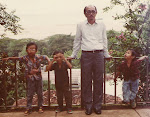
.jpg)
.jpg)
.jpg)
.jpg)
.jpg)
.jpg)
.jpg)

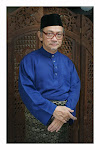

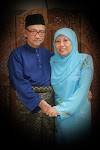




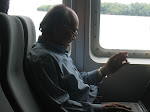
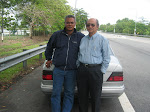

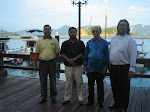













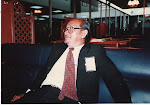




















No comments:
Post a Comment